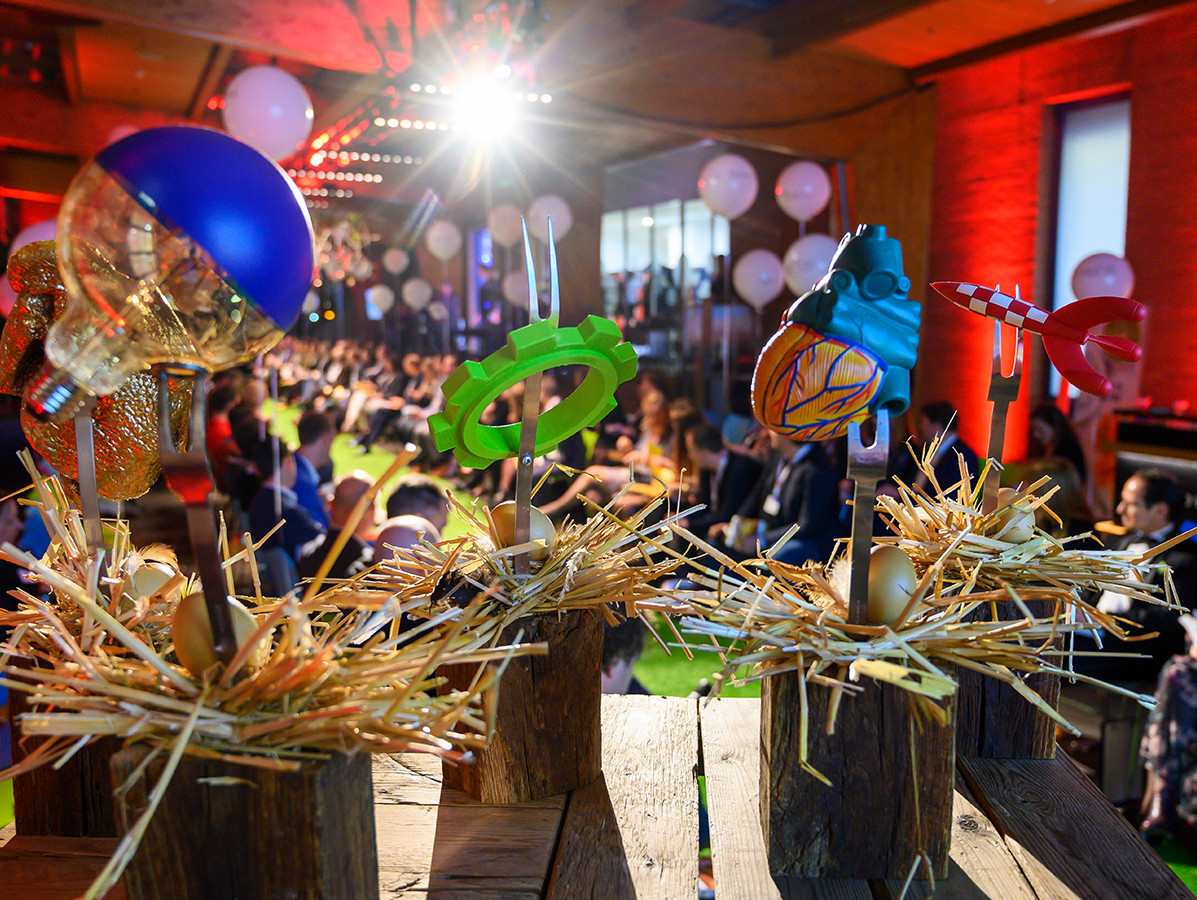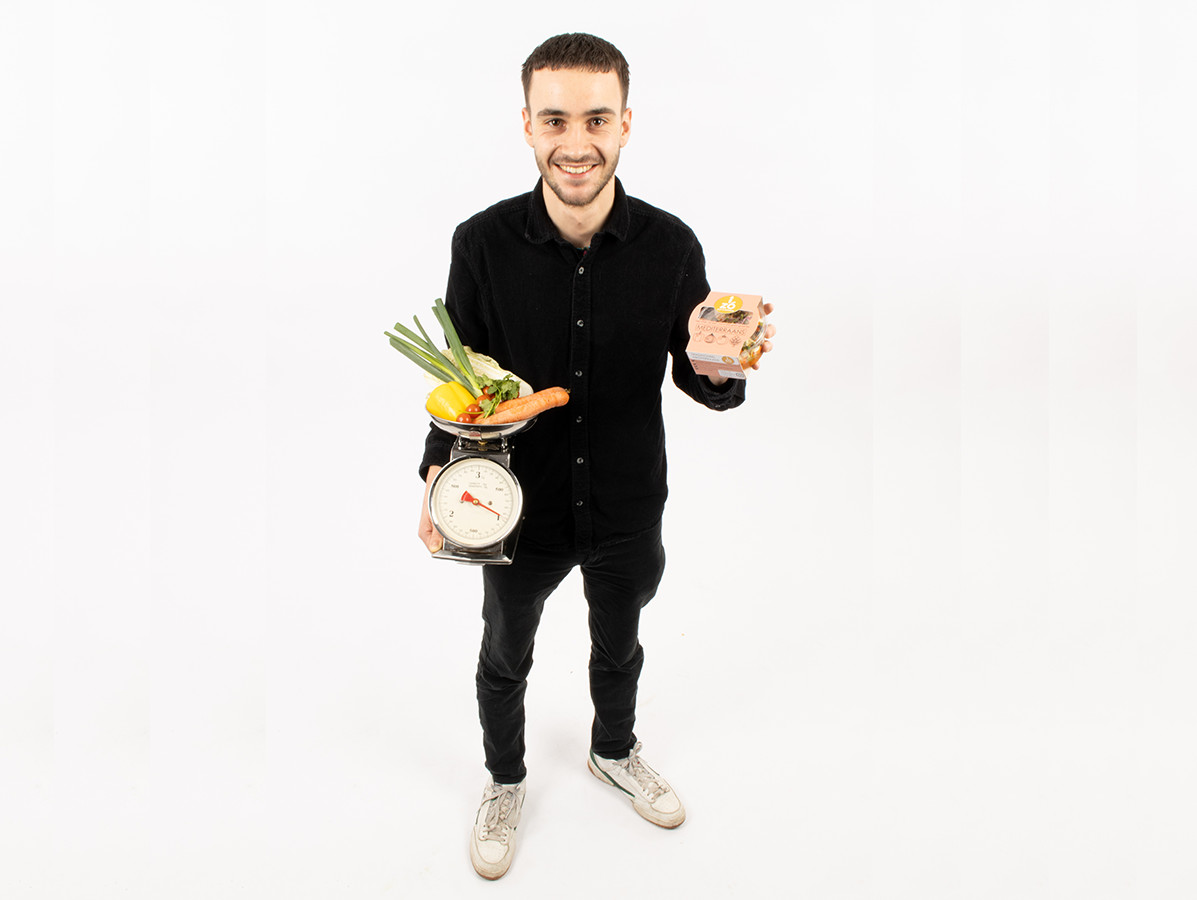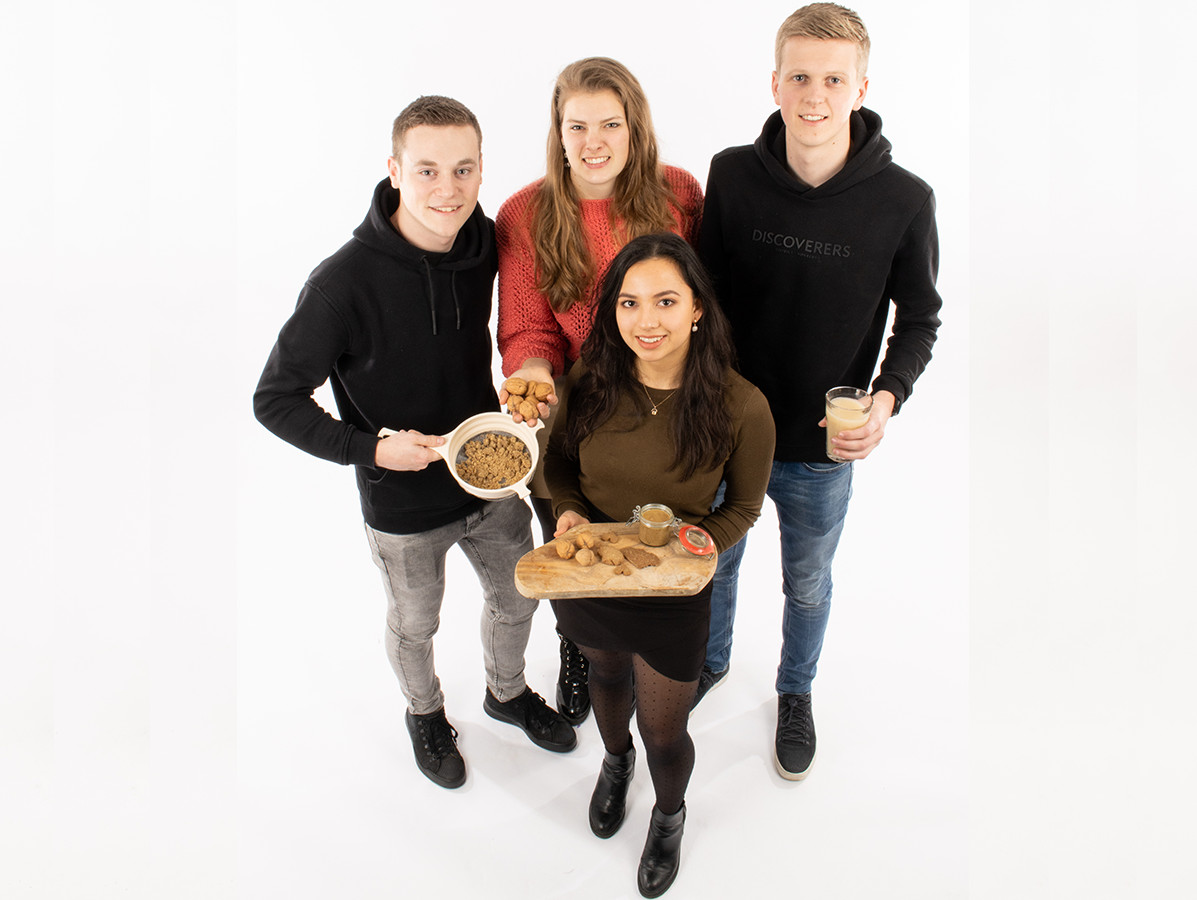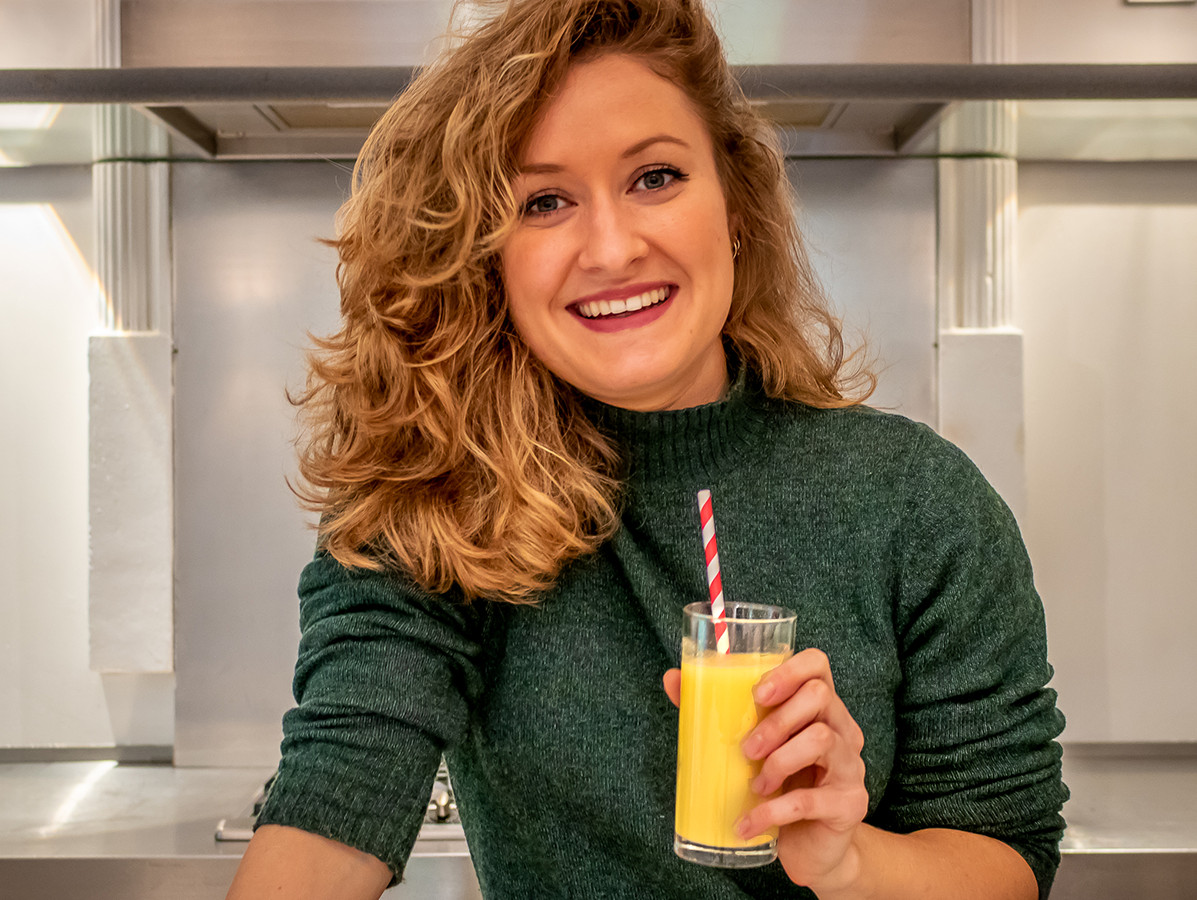
At the 12th HAS Food Experience 230 up-and-coming food professionals presented their projects in the theme 'Today's Food Challenges'. The event has grown into a vibrant platform that helps students with promising concepts find their way to the market.
The HAS Food Experience took place on 4 February. The event at HAS University of Applied Sciences attracted more than 1500 visitors, including many food professionals and renowned food companies. The students devised solutions to promote sustainability and health using innovative technologies, thought about the future of food and food systems, and developed smart solutions for existing and future consumer needs. They often did this in collaboration with companies in the sector or they created their own company.
The projects are divided into four categories: Green & Tech, Lifestyle & Health, Consumer & Business and Start-ups & Entrepreneurs. The FoodManShip Awards were presented to students with a project in which craftsmanship, creativity and entrepreneurship are expressed in an exceptional way. New this year was the 'Outdoor category' award, which included impact on society as an extra jury parameter. Within each category a 'runner up' was also appointed. The jury consisted of professors, alumni, ambassadors and editors-in-chief of (professional) media.
Lifestyle & Health: ZÓ - 250g vegetables at one meal from Connor Goldsmits.
Consumer & Business: resealable rice waffle packaging from Sjoukje Latinga.
Outside category: Redhotintercrop - agroforestry chilli by Dirk Beerendonk, Irene Boelen, Carlo Frenquellucci, Faye Hartman and Vincit Nkouka (research on the feasibility of chillies from food forests as an alternative to purchasing on the world market).
Green & Tech: The Rib Hunter - Vegetarian ribs from Palm Phonpornvithun.

Connor Goldsmits
I find it shocking that so many people in the Netherlands (85%) do not reach the recommended daily allowance (RDA) of vegetables of 250 grams. Figures show that the group of 19 to 30 year olds eat the least vegetables. Exactly the group that shouts the loudest 'wanting to be good and healthy'. The food industry is making great strides in healthier food. Nevertheless, in my opinion there are still a lot of nonsense products on the market, such as beetroot and vegetable tortillas. These products seem healthy, but they are not.
To get to the heart of this discrepancy, I held in-depth interviews with the target group. It turned out that the lack of vegetable food can largely be explained by their often hectic lifestyle. Respondents indicated that they would like to meet the RDA, but simply don't know how. They often don't know at all how much vegetables they eat and they don't feel like constantly paying attention to it. They prefer to get rid of it all at once, buy off their guilt. Convenience is important, but above all it should be tasty, not too expensive, and nice looking. My market research has shown that there is no 'ready-to-eat' product on the market that the RDA offers to vegetables 'bite-sized' in one go. "Why not?" I thought. That is where ZÓ came into existence.
The main ingredients of ZÓ are a lot of vegetables, 250 grams, which differ per flavour variant. Furthermore some legumes, a source of starch (couscous or bulgur in a minimal quantity) and various herbs and spices. One bowl contains only 0.7 grams of salt. I have been looking for a long time for processing methods in which the positive properties of the vegetable are not lost. Some vegetables do require processing such as cooking. I also found it a challenge to offer that amount in a compact way. It turned out to be a beautiful journey: from spending days experimenting in the kitchen, drawing up the right recipe and sparring with fellow students; the interest of big names from the business world, including a supermarket group, vegetable producers and catering companies, presenting the final concept at the HAS Food Experience and the positive reactions. And, of course, winning the FoodManShip award within the Lifestyle & Health category.
In the meantime I have started my B.O. (professional assignment), also my graduation project. For twenty weeks I'm going to further develop ZÓ and prepare it for a possible market introduction; super cool! After this I want to continue with a master Food Technology at the university. What if there is already a nice job on my path in the field of product/concept development? Then I will definitely consider it!

From left to right: Sjoerd van der Goot, Eileen van Gorp, Luuk Smits and (front) Demi Jansen.
"Hanne Hoeve produces walnut oil by cracking and pressing walnuts. The pressing results in a press cake, which still contains a lot of protein. The company's question was whether this residual flow is still too valuable and can be used in human nutrition. We spoke with various experts, after which we developed a number of ideas in theory. We arranged these ideas with a Multi-criteria Analysis (MCA). We worked out the top five ideas in practice, including the nut paste that we had tasted at the Food Experience. We received many positive reactions: 'Tastes very good' and 'When will this be in the supermarket?
As Environmental Sciences students, we started working in a totally different discipline, giving us the opportunity to broaden and deepen our knowledge. What was difficult was that we had little background knowledge of developing food products. We ultimately developed good food products, but the recipes have not yet been optimised. It would be good if food technologists could do that in a follow-up study!
The product now consists of walnut press cake, walnut oil, sugar and salt. The fact that walnut oil is added to it is perhaps a bit crooked. The oil is first squeezed out and then added again. There are two solutions: use a cheaper nut oil (or other oil such as palm oil), or squeeze less oil out of the walnuts so that the press cake remains greasier and is immediately suitable for processing into nut paste.
Walnut press cake has a lot of potential. And not only for products where the walnut taste can really be tasted, such as in nut paste and biscuits. The product from the residual stream can also be processed into products for which the high protein content is important. For example, add it as an alternative source of protein to hybrid burgers with a portion of meat and a portion of gingerbread, or make vegetarian burgers with a percentage of gingerbread and a portion of vegetables or legumes."

Lissa Rotteveel
The Dutch Start-up TuttiFoodi comes with revolutionary preservation technology. They recently launched their first product, the Daily Fruit & Fibre Mix, made with the future-proof drying technique FiberedFresh®.
Lisa Rotteveel, alumnus HAS Food Innovation 2018, was at the basis of the start-up, which she joined via her graduation project: "What we aim for are fair prices for the producers, the lowest possible carbon footprint and a natural production process. Sustainable throughout the entire chain, from farmer to consumer. Preventing food waste also belongs in the category of 'sustainable'. A lot of product is wasted in the fresh produce chain. What is good is often packed in plastic. For TuttiFoodi, we also process fruit that would otherwise not even reach the market because it is too ripe. It would spoil on transport to Europe. Because we remove the water from the fruit before transport, we transport much less weight. This helps us to reduce our CO2 footprint. The paper packaging is biobased.
FiberedFresh® is a completely natural shelf life technology. "Thanks to the addition of a prebiotic dietary fibre, the original fresh taste of the fresh fruit is sealed, as it were, with maximum preservation of nutrients," explains Wilco Vermeer, co-owner. "We harvest the fresh, perfectly ripe fruit in Kenya. There we work together with local farmers and producers. We pay them a fair price. Immediately after harvesting, the fruit is peeled at the production location, pureed and mixed with the dietary fibres. The resulting pulp is dried using a special process. Thanks to the low temperature we use, not only the flavour, but also the vitamins and minerals are preserved. Adding sugar and preservatives is not necessary and therefore we don't do that. Yet the end product, a powder, remains good for at least two years".
Lisa demonstrates how it works in her stand at the Food Experience. "To turn it into another drink, mix 45 to 60 grams of the fruit and fibre mix with 125 ml of water, until it becomes a smooth drink. You can also mix the powder with a portion of yogurt for a more creamy smoothie." The first two flavours have just been introduced: Carribean Breeze (with coconut, pineapple, lime and mango) and Tropical Summer (with mango, pineapple and passion fruit). More surprising flavours will follow. Of course we have to taste, to discover: this is tasty, fresh and fruity. As if the mangos and pineapples have just been freshly picked.
Source: © Karin Jonkers